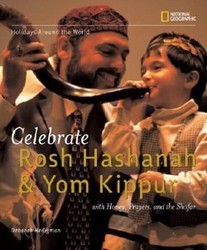Every year, on Yom Kippur, Jews recite Ashamnu and Al Chet at least ten times during the course of the day’s services. Why these lists instead of something more personal? Rabbi Lawrence Hoffman, a professor of liturgy at Hebrew Union College-Jewish Institute of Religion in New York, has edited a collection of essays by contributors representing all Jewish denominations examining the significance of confession in Judaism. The authors are men and women, rabbis and scholars, theologians and poets. They discuss the nature of sin, the importance of community, identity, and the relationship of humans to God. The traditional prayers in the original Hebrew appear along with a new annotated translation that reflects contemporary sensibilities. The essays are thought-provoking. They provide new ways of looking at this ancient tradition. For example, Rabbi Lawrence Kushner looks at the tradition of striking the chest while reciting these prayers, suggesting that the gesture is a way of awakening oneself, owning one’s shortcomings, and resolving to change for the better in the coming year. The book includes extensive notes on sources, a glossary, and appendixes with the personal prayers of the rabbis (Talmud, Berakhot 16b-17a) and confessions of the rabbis (Talmud, Yoma 87b). This is a wonderful resource for study and preparation for Yomim Noriam.

Nonfiction
We Have Sinned: Sin and Confession in Judaism: Ashamnu and Al Chet
- Review
By
– November 14, 2012
Barbara M. Bibel is a librarian at the Oakland Public Library in Oakland, CA; and at Congregation Netivot Shalom, Berkeley, CA.
Discussion Questions

Jewish literature inspires, enriches, and educates the community.
Help support the Jewish Book Council.



